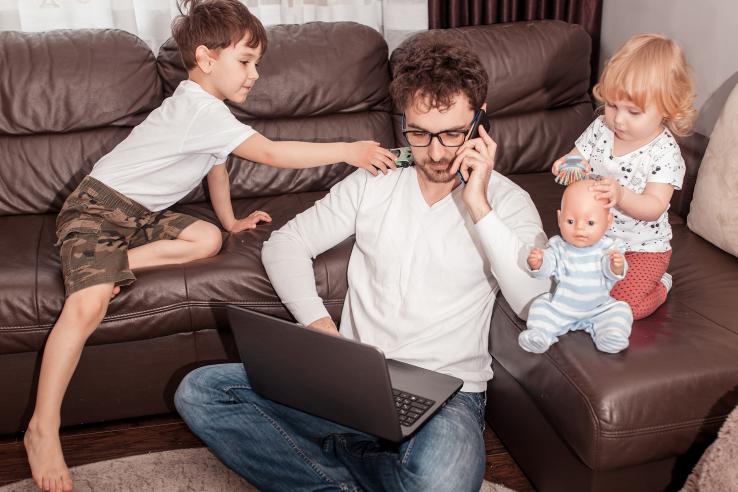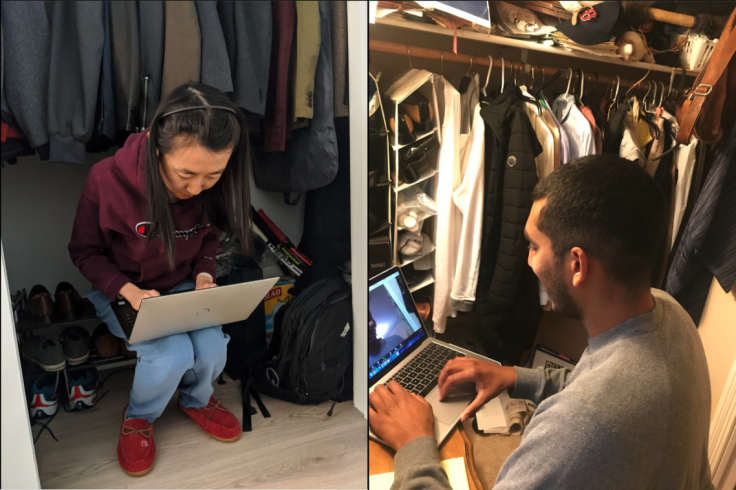
Working remotely or remotely working? Best practices in working from home post COVID-19

In previous years, the idea of working from home was synonymous with ‘shirking from home’, with many associating it with the opportunity to spend more time with the fridge, the bed, or the TV. Today, views around working from home are shifting as millions of American workers have had to rapidly fine-tune their home offices and become adept at video conferencing in just a few short weeks. In 2018, the Bureau of Labor Statistics showed that only 8 percent of all employees in the US worked from home at least one day a week. Today, Gallup estimates that 53 percent of US employees are working remotely.
Many companies and employees are considering extending work from home practices even after COVID-19 restrictions have been lifted. With this in mind, research from randomized evaluations can shed light on some of the benefits of working from home for employees and their employers—and best practices for those of us looking to maximize our productivity while preserving some work-life balance.
What are the impacts of working from home?
In 2014, in collaboration with my co-authors Liang, Roberts, and Ying, we evaluated the impact of a company policy at a Chinese company called Ctrip that would allow employees to work from home for nine months. Among 503 employees who expressed an interest in the program, half were randomly selected to work from home, and the remainder stayed in the office to act as the comparison group. Both office and home workers used the same IT equipment, carried out the same tasks, and were compensated under the same payment system.
Results from the study found that performance of home workers improved by 13 percent over nine months, primarily driven by an increase in time spent working and an increase in productivity. Quit rates among home workers also fell by 50 percent compared to the comparison group. The work from home policy also benefited the firm; Ctrip saved an estimated $2,000 a year per employee from the improved performance, reduced turnover, and reduction in office space.
Of course, results from one study in China can’t necessarily be extrapolated to all organizations in all countries—but the results suggest that working from home can have positive benefits for employers that go beyond employee satisfaction and lead to actual cost savings.
Space and privacy matter
The setting in which that study was conducted is clearly different from today’s setting, in which social distancing and working alongside kids has become the norm. (My daughter regularly bursts into the room in the middle of my conference calls shouting “doodoo!”, hoping to find me in a playful mood.)
There are also many of us who are working in shared spaces that may not be conducive to work. In our Ctrip evaluation, the work from home option was only open to employees who had a home office that could be closed off to anyone except for the employee.
Nevertheless, if work from home practices are going to continue even after the pandemic is over, are there any lessons that employers can learn from the Ctrip study to make future telecommuting more effective?

Some lessons for working from home post-pandemic
- Offer work from home on a part-time basis: In the Ctrip study, employees were asked to work from home four days a week and come into the office every fifth day. Most of us need time in the office to stay motivated and creative. Face-to-face meetings could still be important for spurring and developing new ideas, and for keeping employees motivated and focused.
- Let workers decide: Personal choice was also an important factor that contributed to the success of Ctrip’s policy. In the study, only 50 percent of employees volunteered to work from home four days a week over a nine-month period. For many younger workers, the office was a core part of their social life and they preferred to commute each day to see their colleagues.
- Give all workers flexibility: Nine months after the evaluation, Ctrip offered all employees the option to work from home. Strikingly, over half of all employees changed their minds, preferring instead to return to the office. This allowed less successful home-based employees to return to the office and more successful employees to continue working from home, and this was subsequently associated with a further rise in productivity to 22 percent. Giving Ctrip workers this flexibility allowed them to learn about their own suitability for working from home.
- Emphasize that working from home is a privilege: As COVID-19 restrictions begin to lift and companies worldwide consider extending remote working practices, there may be the fear that one or two employees could abuse the system and underperform as a result. One suggestion here is that workers who underperform at home could be given a warning, and if necessary recalled into the office for a few months.
While the longer term consequences of home working are yet unclear, it is safe to assume that the work from home movement is here to stay. But there are many reasons to remain optimistic.
Companies who are able to adopt the necessary technologies and allow remote working under conditions similar to the Ctrip study could potentially see improved productivity, greater job satisfaction, and could free up significant office space. Commuting times for millions of Americans might also fall substantially, which could have a tremendous impact on all our lives.
Finally, as necessity is the mother of invention, we will no doubt start to see more creative and innovative strategies to help us adapt to a new future with more of us working from home. This is an area that the J-PAL firms sector is actively working on, and we look forward to furthering this research and generating new ideas to help employees develop a better work-life balance.




